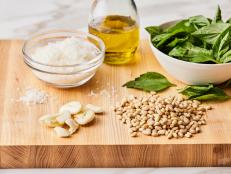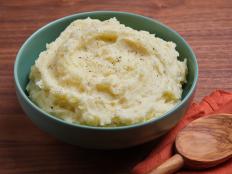How to Make Sauerkraut
Sauerkraut is a traditional dish of fermented vegetables. Cabbage is the most-common vegetable used; green or red cabbage works equally well. But you can also include other crunchy vegetables such as carrots, radishes or turnips. Caraway is a common seasoning, but you can experiment with other spices to your liking; however, do not vary the proportion of salt to vegetables.
Sauerkraut — a Basic Recipe:
2 pounds total cabbage and/or other crunchy vegetables
1 tablespoon plus 1 teaspoon kosher or sea salt (do not use table salt)
1-2 teaspoons seasonings
For this version, we used 1 pound red cabbage, 1 pound carrots (3 large), and 1 teaspoon each mustard seed and fennel seed. This will result in a ruby-red sauerkraut with an intriguing flavor and mild sweetness.
Prepare the Cabbage
Core and quarter and core your cabbage, if using. Slice crosswise as thinly as you possibly can with a very sharp knife. A mandoline or food processor with a slicing attachment are also good for this.
Grate the Carrots
Grate the carrots or other crispy vegetables (e.g., radishes or turnips), if using, with a box grater or food processor with a grating disc. You want all your vegetable material to be of comparable size so it cures evenly.
Mix It Up
Combine all the vegetables in a large nonreactive bowl with the salt and spices.
Get Hands-On
Toss all the ingredients in the bowl until well combined, then gently crush with your hands. This massaging will help to break down the cell structure and allow the salt to penetrate the vegetables better. Do this until they start to release liquid, about five minutes.
Pack It Into a Jar
Clean a quart-size Mason jar well with hot, soapy water, or better yet, sterilize it in the dishwasher. Pack the sauerkraut into the jar. As the jar fills, use your hand or a utensil to pack it in more densely. The juices will rise to the top.
Fill ’Er Up
You should have just enough to completely fill a quart-size jar, very tightly packed. Press down hard and allow as much liquid to rise as possible.
Keep It Submerged
Add a small weight on top to ensure the kraut stays submerged in its juices. A smaller, clean Mason jar or ziplock bag filled with water works well. You want the cabbage to stay below the surface of the brine in order to prevent spoilage.
Scrape Away the Scum
Loosely cover the jar with a clean kitchen towel or cheesecloth. Add a rubber band to secure the cloth loosely around the neck of the jar to keep out debris. Place the jar on a dish to catch any juices that might flow over.
Check it every day to make sure the kraut stays submerged; if it does not, press down to release more juices, and if necessary add a little water. One day in, you should see bubbles forming; after two days you may see foam, scum or even some mold, which can simply all be skimmed off.
Ready to Taste
Three days into the fermentation process, taste your sauerkraut. It should be lightly sour, fragrant and maybe even a little effervescent. With each passing day, the kraut will get more sour and pungent; it will also continue to soften as the fermentation breaks down the cell walls. If you prefer your kraut crisp and mild, it should be ready within three to five days; if you prefer it softer and with a stronger flavor, a week or longer may be required. When the sauerkraut is to your liking, seal the jar and store in the refrigerator for up to several weeks. The kraut will continue to ferment in the refrigerator, though much more slowly.































































